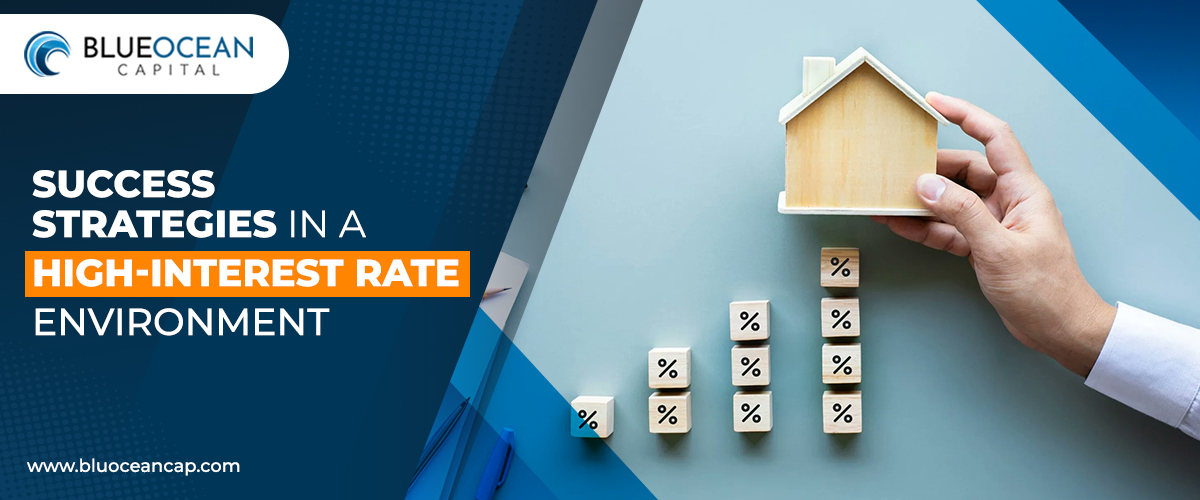
Different effects may result depending on how investors position their assets in a high-interest-rate environment. For example, rising interest rates can result in higher returns for those holding fixed-income investments like bonds or certificates of deposit (CDs), improving cash flow.
Conversely, persons wishing to obtain debt, such as to finance a home, need help. For example, a 30-year mortgage had an average interest rate of 2.96% in 2021. In 2022, that number increased to 5.34%, and through the first few months of 2023, rates varied between 6 and 7%.
Investors can take specific actions to make sure their money is working hard for them even though we cannot predict with certainty where the economy is headed. The hosts of Passive Income Pilots, Tait Duryea, and Ryan Gibson, recently covered the rising interest rates and highlighted tactics for staying ahead of the curve.
Here are the top five conclusions:
Where did we come from? It’s Difficult
A pandemic, a significant disruption of the supply system, a severe geopolitical conflict, and record inflation have all occurred since 2020. As a result, the overnight borrowing cost was nearly 0% at the end of 2021, and purchasing power was high—this increased demand for assets like real estate.
The Fed declared that it would raise interest rates to combat this. Most financial analysts at the time expected gains of 1% to 1.5%. Instead, the federal funds rate presently ranges from 4.5 to 5%.
The current environment’s relative stability is evidence of our economy’s resiliency. It remains to be seen if the Fed can pull off a “soft landing” in which the economy slows down just enough to reach the goal interest rate of 2% without entering a recession.
Read More – The Impact Of The Interest Rate Hike On The Real Estate Market
Without investing, you are losing money.
High-interest rates can be a problem for borrowers but a gold mine for investors. Although the cost of debt has increased, yields on products like high-yield savings accounts and CDs have also increased.
Banks are actively soliciting deposits, and many are willing to give highly competitive interest rates — frequently above 4% — as people are still thinking about the Silicon Valley Bank and Signature Bank disasters.
Compare that to an investor who keeps extra money in a checking account with 0% interest. They may be putting money on the table by simply failing to seize the chances at their disposal.
Inversion of the Yield Curve
We are accustomed to operating in high-interest rate settings. However, the condition of the yield curve is what distinguishes this time.
The link between interest rates and the maturity dates of a particular asset is plotted on yield curves. Longer-maturity bonds have a higher yield when compared to shorter-term bonds since a “normal” yield curve has an upward slope. However, the current yield curve is inverted, meaning that long-term bonds pay lower interest rates than their short-term counterparts.
In the CD market, the same holds. As a result, investors looking for CDs are likely to discover three-month CDs to have significantly more favorable interest rates than a five-year CD.
Investors are accustomed to negotiating the “normal” yield curve to achieve better returns and anticipate giving up liquidity. However, that partnership has been flipped on its head for now. As a result, alternatives to CDs, such as debt funds, which provide a high yield over a more extended period, are more appealing.
Avoid Ignoring Arbitrage
Interest arbitrage can be a potent instrument to help investors get the most out of their money as rates climb. The overall debt American households owe is $16.5 trillion, with the average family due $165,000. One of the leading financial objectives for many is to pay off debt, especially mortgage debt. However, aggressive early payments could prevent borrowers from moving further.
Interest arbitrage is a tactic used by investors to balance assets and debt at the same time profitably. Over the past two years, millions of Americans refinance their mortgages at 2-3% interest rates. Paying more than the minimum payment due each month may not be the most efficient use of cash for people with low-interest debt. Consider a 3% mortgage note. The mortgage holder will ultimately benefit most from keeping the debt in place and using leverage elsewhere if they can make more money with their investments than that.
First, pay yourself
A situation with high-interest rates offers a unique chance to amass riches. So, adopting the “pay yourself first” mentality might be very beneficial.
Investors can use their earned money to leverage into a high-yield opportunity, like a debt fund, to create a new source of cash flow. Once they have that money, they can utilize it to cover monthly expenses, whether they are luxuries like a car or necessities like a mortgage payment. Or they can reinvest to increase their earnings even further.
In conclusion, navigating a high-interest rate environment can be challenging, but with the right strategies, it is possible to achieve success. As an individual, it is essential to prioritize debt repayment and savings to maximize the benefits of higher interest rates. As a business owner, understanding the impact of interest rates on cash flow and investments can help make informed decisions. Additionally, staying knowledgeable about economic trends and seeking the guidance of financial experts can be valuable in making the most of a high-interest rate environment. By implementing these strategies, individuals and businesses can survive and thrive in a high-interest-rate climate.
